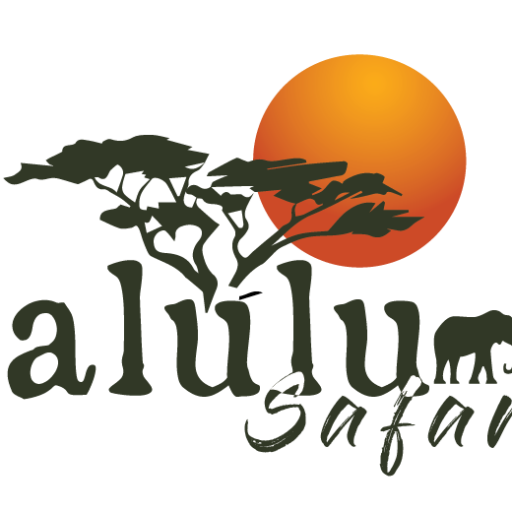The Physical and Mental Challenges of Climbing Kilimanjaro: What to Expect and How to Prepare
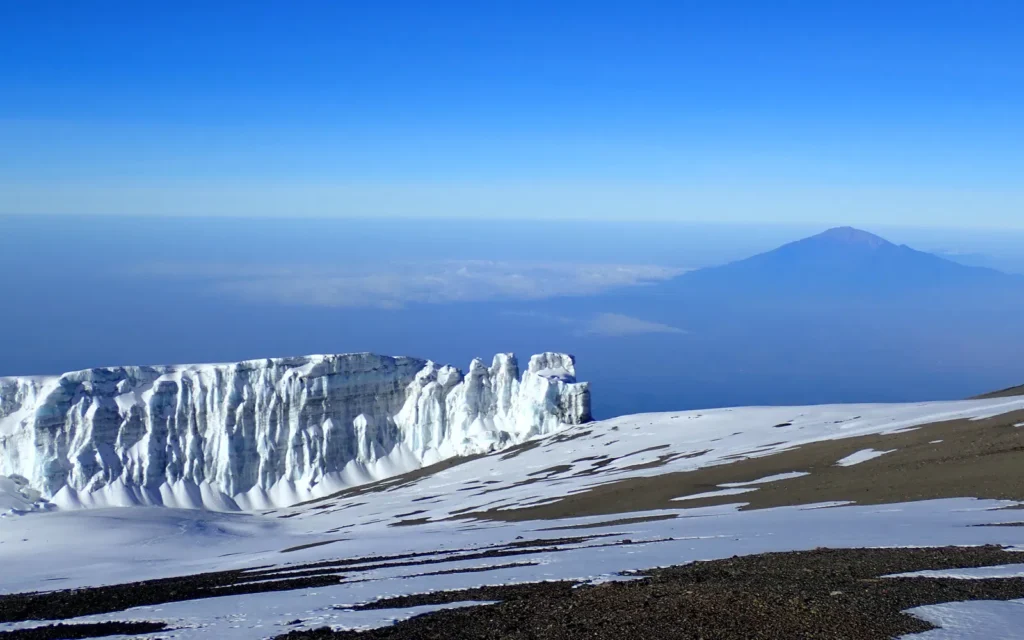
The Physical and Mental Challenges of Climbing Kilimanjaro: What to Expect and How to Prepare Climbing Mount Kilimanjaro is a rewarding yet demanding adventure that pushes both the body and mind. Known as the “Roof of Africa,” Kilimanjaro towers at 5,895 meters (19,341 feet), and reaching the summit is no small feat. While it doesn’t require technical mountaineering skills, the Physical and Mental Challenges of Climbing Kilimanjaro—such as altitude, varying weather, and physical stamina—make it a significant challenge. Here’s an in-depth look at what to expect physically and mentally, along with strategies to prepare for and overcome these obstacles. The Physical and Mental Challenges of Climbing Kilimanjaro will test your endurance, patience, and determination. As you ascend, the body’s ability to adjust to high altitudes will be challenged, and mental resilience will be required to push through fatigue and discomfort. To overcome the Physical and Mental Challenges of Climbing Kilimanjaro, preparation is key. Understanding what to expect and having the right mindset will help you navigate the tough moments and enjoy the rewards of reaching the summit. 1. Physical Challenges and How to Prepare Altitude and Acclimatization Altitude is perhaps the biggest physical challenge on Kilimanjaro. As you ascend, oxygen levels drop, making it harder to breathe. Altitude sickness, which includes symptoms like headaches, nausea, dizziness, and fatigue, can affect anyone, regardless of fitness level. Preparation Tips: Choose the Right Route: Routes like Lemosho or Machame allow for longer acclimatization and increase your chances of adjusting well to the altitude. Consider Altitude Training: If possible, spend time at high altitudes before your climb or train with an altitude simulation mask. Pace Yourself: Follow the Swahili mantra “pole pole,” which means “slowly, slowly.” A steady pace helps your body adjust to the altitude more effectively. Endurance and Stamina Kilimanjaro treks range from six to nine days, requiring significant physical endurance. Some days involve trekking for 6-8 hours, with summit night pushing upwards of 10-12 hours of continuous hiking. Preparation Tips: Cardiovascular Training: Running, cycling, swimming, and hiking help build the stamina needed for long days on the trail. Leg and Core Strength: Exercises like squats, lunges, and core work (planks, crunches) strengthen key muscles and improve balance. Backpack Training: Practice hiking with a loaded backpack, as you’ll carry your daypack with essentials on the climb. Cold and Unpredictable Weather Weather on Kilimanjaro can be unpredictable, with temperatures ranging from hot and humid at the base to sub-zero at the summit. Summit night, in particular, is cold, with potential exposure to high winds and snow. Preparation Tips: Invest in Proper Gear: Layering is key; pack moisture-wicking base layers, insulating mid-layers, and waterproof outer layers. A high-quality sleeping bag rated for sub-zero temperatures is essential. Prepare for Wet Conditions: The rainforest zone often has rain, so pack a waterproof jacket, pants, and backpack cover. Physical Recovery During the Trek Your body will need time to rest and recover each night. Inadequate rest can lead to increased fatigue and injury. Preparation Tips: Stretching and Mobility: Incorporate stretching and foam rolling into your routine to reduce muscle tension and improve flexibility. Stay Hydrated and Eat Well: Bring snacks that you enjoy and consume carbs, proteins, and fats at meals to sustain energy levels. Hydration helps manage altitude symptoms, so aim for 3-4 liters of water daily. 2. Mental Challenges and How to Overcome Them Managing Expectations Kilimanjaro tests mental resilience as much as physical endurance. There will be times when fatigue, altitude sickness, and weather make you question your ability to reach the top. Preparation Tips: Set Realistic Goals: Understand that the trek is demanding and be ready for both highs and lows. Celebrate small milestones along the way. Visualize Success: Many climbers find it helpful to visualize themselves reaching the summit. This positive mental reinforcement can provide motivation during challenging moments. Summit Night: Overcoming Mental and Physical Fatigue Summit night is the most grueling part of the climb. You’ll start around midnight to reach the peak by sunrise, facing steep, rocky paths in freezing temperatures and low oxygen levels. This can lead to mental exhaustion and self-doubt. Preparation Tips: Break it Down: Focus on each step rather than how much further you have to go. Breaking the journey into small, manageable parts helps sustain focus and motivation. Adopt a Positive Mantra: A short, uplifting mantra can help refocus your mind. Many climbers use phrases like “step by step” or “I am strong” to stay motivated. Coping with Discomfort Climbing Kilimanjaro involves dealing with discomfort from altitude symptoms, blisters, cold, and the lack of modern amenities. Preparation Tips: Practice Mental Resilience: Meditative techniques, such as controlled breathing, can help manage discomfort. Embrace the Challenge: Remind yourself that discomfort is part of the journey, and push yourself to adapt. Positive self-talk can make a significant difference in your mental outlook. Staying Motivated Extended trekking, early mornings, and long days can lead to mental fatigue. Staying motivated throughout is crucial to making it to the summit. Preparation Tips: Focus on the Bigger Picture: Remind yourself why you’re there. For many, the experience of Kilimanjaro is a once-in-a-lifetime journey that offers personal growth and a deep sense of achievement. Stay Connected with Your Group: Bonding with your fellow trekkers can provide a strong support network. Share your challenges and encouragement with others; teamwork often boosts morale. 3. Practical Tips for a Successful Climb Practice Self-Care: Keep blisters at bay by wearing broken-in boots, and use tape or blister pads if necessary. Take care of your skin with sunscreen and lip balm to prevent chapping from the wind and sun. Learn Basic Swahili Phrases: Knowing a few Swahili words can help you connect with your guides and porters. Learning “asante” (thank you) and “hakuna matata” (no worries) can go a long way. Trust Your Guide: Experienced Kilimanjaro guides, like those with Kalulu Safaris, know the mountain intimately. They’ll provide encouragement, help you with pace, and offer advice on staying safe and comfortable. Trusting their guidance can ease some
The Best Time to Climb Kilimanjaro: A Guide to the Mountain’s Climate and Weather Patterns
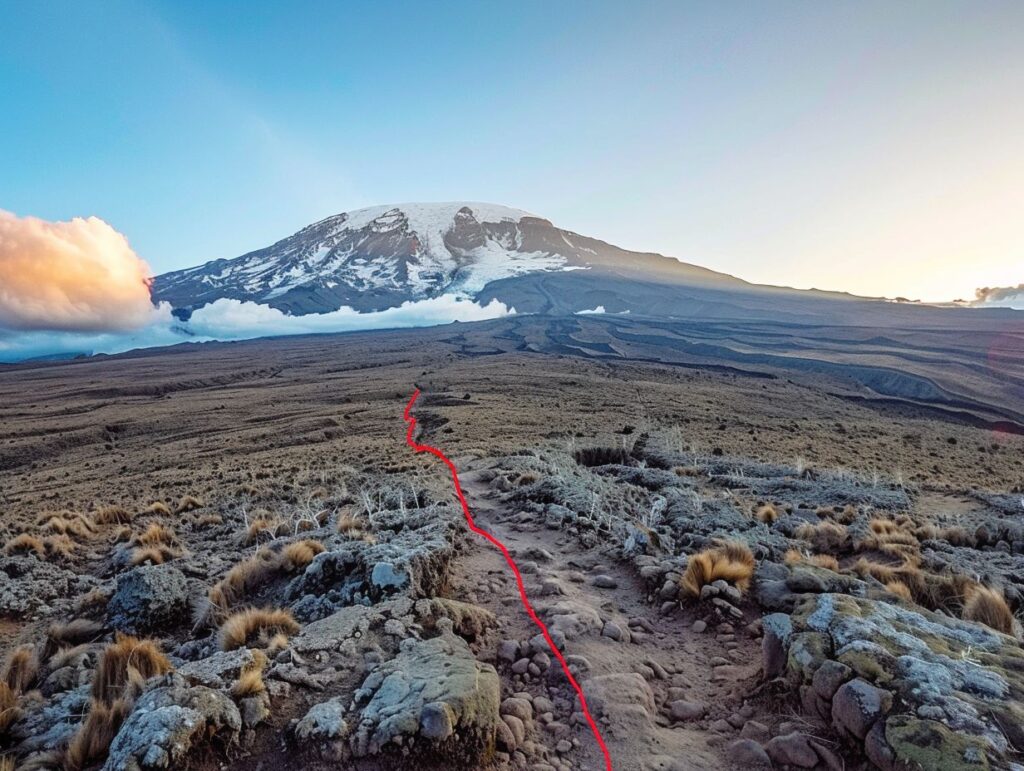
The Best Time to Climb Kilimanjaro: A Guide to the Mountain’s Climate and Weather Patterns Climbing Mount Kilimanjaro is a once-in-a-lifetime experience, but choosing the right time to embark on your journey can make a significant difference in the quality of your adventure. The weather and climate on Kilimanjaro can be unpredictable, varying drastically between its lower slopes and the summit. This guide will help you understand Kilimanjaro’s weather patterns, recommend the best times to climb, and provide tips on how to avoid the crowds, ensuring you have the best possible experience. Understanding Kilimanjaro’s Climate Zones Mount Kilimanjaro has several distinct climate zones that change as you ascend. These range from the tropical heat at the base to the frigid temperatures near the summit. Tropical Rainforest (Lower Slopes)The lower slopes of Kilimanjaro, where climbers begin their trek, are characterized by warm and humid conditions with frequent rainfall. This zone is rich in plant life, with dense forests, waterfalls, and diverse wildlife. Moorland and Alpine Desert (Mid and High Zones)As you climb higher, the temperature drops, and rainfall becomes less frequent. The moorland zone is marked by a cooler, more temperate climate, while the alpine desert zone (above 13,000 feet) is dry and chilly with little vegetation. Summit Zone (The Roof of Africa)At the summit, temperatures can plummet to below freezing, and climbers face icy winds, snow, and extreme altitude. The weather here is harsh, and the air is thin, making it essential to acclimatize properly. The Best Time to Climb Kilimanjaro The ideal time to climb Kilimanjaro depends on the weather conditions and your ability to handle the climate at various altitudes. Here are the most favorable months to climb: 1. The Dry Seasons: June to October and December to February The best months to climb Kilimanjaro are during the dry seasons, which occur in two distinct periods: June to October December to February During these months, the weather is typically dry, with clear skies and mild temperatures. These periods offer the most stable and predictable weather conditions, which are essential for a safe and successful climb. The lack of rainfall ensures the trekking paths are not too slippery, and the views from the summit are often crystal clear. Pros: Dry weather, reducing the risk of rain and mud. Clear skies and excellent visibility at higher altitudes. Ideal conditions for photography. Cons: The dry season is the most popular time to climb, meaning there will be more climbers on the mountain. Expect more crowded conditions at campsites and the summit. 2. The Short Rainy Season: November and Early December While not as popular as the dry season, November and early December are part of Kilimanjaro’s short rainy season. While it’s still possible to climb during this time, the lower slopes of the mountain can experience occasional rain, which can make the trek muddy and slippery. Pros: Fewer crowds, which means a more tranquil and solitary experience on the mountain. Lush green landscapes, especially in the rainforest zone. Cons: Rain can cause difficult trail conditions. Muddy paths may slow your progress, and visibility may not be as good due to cloud cover. 3. The Long Rainy Season: March to May The long rainy season, which occurs from March to May, is generally the least favorable time to climb Mount Kilimanjaro. During this period, the mountain experiences heavy rainfall, particularly in the lower and mid-altitudes. The trekking paths can become slippery and treacherous, and the summit weather is likely to be harsh and unpredictable. Pros: Extremely low numbers of climbers, making it an excellent option for those seeking solitude. Cooler temperatures in the lower zones. Cons: Heavy rain makes trekking difficult and uncomfortable. Poor visibility and potential for trail closures due to dangerous conditions. Higher chances of altitude sickness due to wet, slippery conditions that slow your pace. Crowd Avoidance: Climbing Kilimanjaro in Peace To avoid the crowds, it’s best to plan your trek during the shoulder months of March, April, and November. While the weather may not be ideal, these months offer fewer climbers, meaning less competition for campsites and a more peaceful, intimate experience on the mountain. However, if you’re aiming for the best possible conditions (while still avoiding the peak crowds), climbing at the beginning of May or late November can offer a balance of lower traffic and decent weather. Tips for Climbing Kilimanjaro in Different Seasons During the Dry Season (June – October, December – February): Stay hydrated, as the dry weather can increase the risk of dehydration. Wear layered clothing for the varying temperatures, from the warmth of the lower slopes to the cold at the summit. Prepare for the crowds by booking your trek in advance and choosing less popular routes like the Rongai Route or Lemosho Route for a more peaceful climb. During the Rainy Season (March – May, November): Ensure you have waterproof gear to stay dry during the rainfall. Choose longer, less strenuous routes that allow for acclimatization and prevent rapid ascent, which can increase the risk of altitude sickness. Be prepared for slippery conditions, especially on steeper sections of the climb. Conclusion: When to Climb Mount Kilimanjaro The Best Time to Climb Kilimanjaro largely depends on your preferences for weather and crowd conditions. For most climbers, the dry seasons of June to October and December to February are considered the Best Time to Climb Kilimanjaro, offering excellent weather and optimal climbing conditions. However, if you prefer a quieter experience, the shoulder months of March and November can also be a good choice for the Best Time to Climb Kilimanjaro—though you’ll need to be prepared for occasional rain and muddier conditions. By carefully considering the mountain’s weather patterns and selecting the Best Time to Climb Kilimanjaro, you can maximize your chances of a successful and unforgettable Kilimanjaro adventure. The dry seasons not only offer the Best Time to Climb Kilimanjaro for clear skies and pleasant trekking paths but also allow you to enjoy breathtaking views from the summit. For those who value
Kilimanjaro’s Breathtaking Landscapes: A Photographic Journey to the Roof of Africa
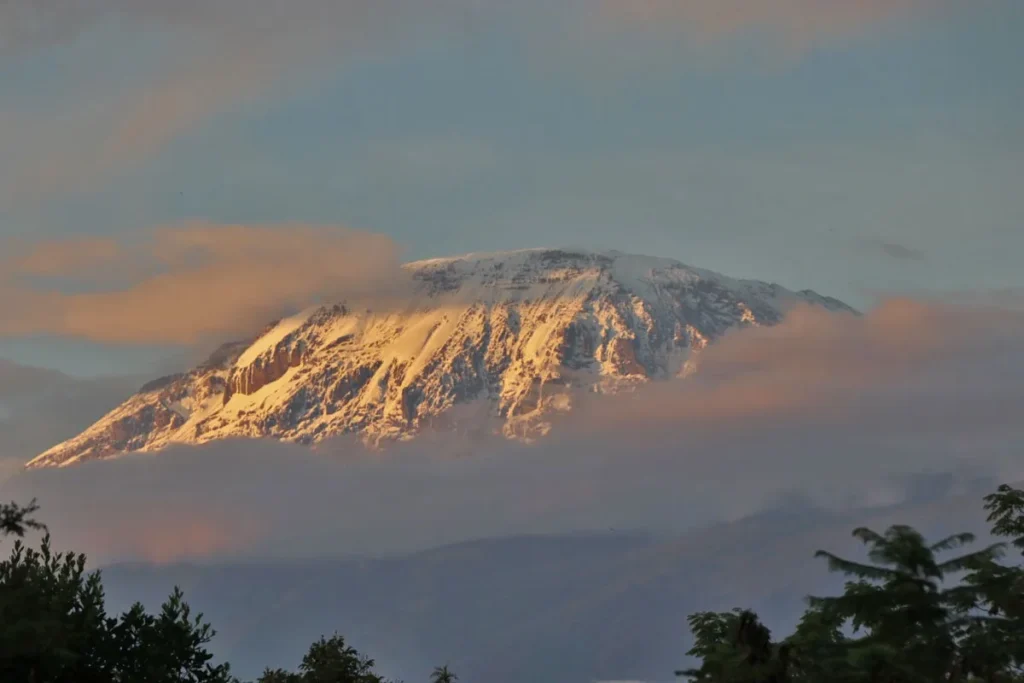
Kilimanjaro’s Breathtaking Landscapes: A Photographic Journey to the Roof of Africa Mount Kilimanjaro is one of the most awe-inspiring and photogenic locations on Earth, offering climbers and photographers an unmatched blend of landscapes and breathtaking vistas. Kilimanjaro’s Breathtaking Landscapes captivate adventurers with their diversity, from the lush rainforests at its base to the snow-capped summit of Uhuru Peak. Each zone on the mountain presents its own unique beauty, creating an unforgettable journey. This exploration of Kilimanjaro’s Breathtaking Landscapes—from sunrise to sunset—takes you up the slopes to discover why this iconic peak is known as the “Roof of Africa.” Whether you are a seasoned photographer or an enthusiastic climber, Kilimanjaro’s Breathtaking Landscapes promise awe-inspiring views and memories to last a lifetime. 1. The Verdant Rainforest Zone: Kilimanjaro’s Green Welcome The adventure begins in the rainforest zone, which covers the lower slopes of Kilimanjaro. This lush, green belt is filled with giant trees draped in moss, misty air, and a symphony of bird calls. Here, wildlife like colobus monkeys and colorful birds can be spotted, adding life and vibrancy to this first leg of the journey. Photography Tip: Capture the rainforest early in the morning when sunlight filters through the dense foliage, creating rays that enhance the forest’s enchanting quality. A wide-angle lens will help you showcase the towering trees and dense plant life. 2. The Heather and Moorland Zone: Where Green Meets Blue Skies As you move higher, the dense rainforest gradually gives way to the heather and moorland zone. This landscape is marked by tall grasses, heather shrubs, and giant groundsels, an endemic plant that looks like something out of a fairy tale. Here, the horizon opens up, allowing panoramic views of the sky and distant hills below. Photography Tip: For a striking composition, capture the giant groundsels and lobelias against the expansive African sky. This area is particularly photogenic during clear afternoons when the soft sunlight illuminates the unusual flora. 3. The Alpine Desert: A Surreal, Rocky Landscape The alpine desert, situated between 13,000 and 16,000 feet, is a surreal and desolate landscape, a stark contrast to the lush zones below. This area is characterized by rocky expanses, volcanic rocks, and minimal vegetation. The clear, thin air allows for stunning long-distance views, and the weather here can change rapidly, making for dramatic photo opportunities. Photography Tip: The alpine desert is ideal for capturing stark, minimalist landscapes. Emphasize the contrast between the rugged rocks and the open sky, and experiment with black-and-white photography to bring out the dramatic textures of the landscape. 4. The Summit Zone: Snow and Ice Above the Clouds Above 16,000 feet lies Kilimanjaro’s icy crown: the summit zone. This area is home to glaciers, snowfields, and the magnificent crater. At sunrise, as the first light hits the mountain, the glaciers shimmer in hues of pink and gold, offering a breathtaking sight. Reaching Uhuru Peak, the highest point in Africa, is the ultimate reward, with panoramic views of the continent stretching endlessly. Photography Tip: For the summit, plan to reach the peak at sunrise. Capture the glaciers with the soft, warm glow of the morning sun, which creates a magical atmosphere. If possible, include climbers in your shot for scale, as the vastness of this landscape is truly humbling. 5. Sunset on Kilimanjaro: A Golden Goodbye After a long day of trekking, sunset on Kilimanjaro brings another breathtaking scene. The sun dips below the horizon, casting Kilimanjaro’s shadow over the landscape and painting the sky with deep oranges, pinks, and purples. Watching the sunset from the mountain’s higher altitudes offers an incredible perspective over Tanzania’s vast plains below. Photography Tip: Sunsets on Kilimanjaro are best captured with a long exposure to enhance the vibrant colors of the sky. Be sure to find a high vantage point to capture the sweeping landscape and Kilimanjaro’s silhouette as it touches the clouds. Planning Your Photographic Journey on Kilimanjaro To capture Kilimanjaro’s landscapes in their full glory, consider the following tips: Bring the Right Equipment: Carry a sturdy camera with weather-resistant lenses, as Kilimanjaro’s weather can be unpredictable. A wide-angle lens is essential for capturing the vastness of the landscapes. Pack Extra Batteries: Cold weather drains batteries quickly, especially near the summit. Bring extra batteries and keep them insulated in your jacket pockets. Consider Hiring a Local Guide: Guides from companies like Kalulu Safaris know the best scenic spots on the mountain and can help you capture unique perspectives. Acclimatize and Take Your Time: Rushing can cause altitude sickness and reduce your time to enjoy and photograph each zone. Choose a longer route to allow for acclimatization and more photography opportunities. Embrace the Golden Hours: Sunrise and sunset provide the best lighting for landscape photography. Plan your climbs and rest times to be in scenic areas during these hours. Final Thoughts: Capturing the Beauty of Kilimanjaro Kilimanjaro’s breathtaking landscapes offer something for every photographer, from lush jungles to stark, otherworldly glaciers. Kilimanjaro’s breathtaking landscapes captivate adventurers as each zone reveals a unique aspect of the mountain’s beauty, making the climb as rewarding for the journey as it is for the summit. With Kilimanjaro’s breathtaking landscapes as your backdrop, careful preparation, patience, and an eye for natural wonders will ensure your journey to the Roof of Africa yields stunning images and lifelong memories. When you’re ready to experience Kilimanjaro’s breathtaking landscapes firsthand, Kalulu Safaris is there to guide you every step of the way. Our expert guides will help you explore and photograph Kilimanjaro’s breathtaking landscapes safely and comfortably, ensuring your adventure is unforgettable. From dawn to dusk, immerse yourself in Kilimanjaro’s breathtaking landscapes, capturing the magic of this incredible mountain. Trust Kalulu Safaris to make your dream of exploring Kilimanjaro’s breathtaking landscapes a reality.
Conquering Kilimanjaro: A Step-by-Step Guide to Climbing Africa’s Highest Peak
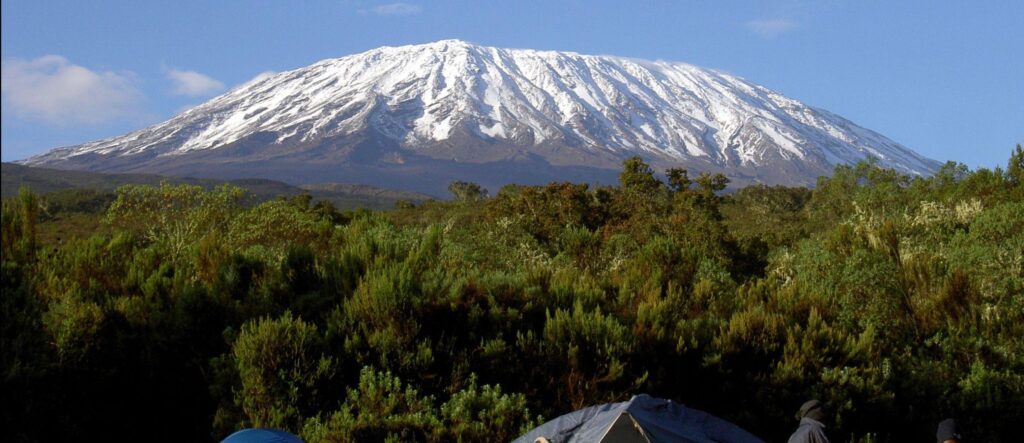
Conquering Kilimanjaro: A Step-by-Step Guide to Climbing Africa’s Highest Peak Climbing Mount Kilimanjaro is a bucket-list experience for many adventurers, offering stunning landscapes, diverse ecosystems, and a sense of immense accomplishment. Known as Africa’s tallest mountain at 5,895 meters (19,341 feet), Kilimanjaro attracts climbers from all over the world. But Climbing Mount Kilimanjaro requires careful planning, proper preparation, and physical and mental resilience. For those dreaming of Climbing Mount Kilimanjaro, here’s a comprehensive guide from Kalulu Safaris to help you prepare for the climb of a lifetime. 1. Choose Your Route Wisely Mount Kilimanjaro offers several distinct routes, each with different levels of difficulty, scenery, and acclimatization opportunities. Choosing the right route for your skill level and goals is crucial to success. Marangu Route: Often called the “Coca-Cola Route,” this is the only route with hut accommodations. It’s a shorter route but has a lower success rate due to its fast ascent. Machame Route: Known as the “Whiskey Route,” this is the most popular route, with scenic paths and better acclimatization options, making it ideal for those seeking a balance between challenge and enjoyment. Lemosho and Shira Routes: Both offer beautiful scenery and high success rates. These longer routes allow for better acclimatization, making them suitable for those with a bit more time. Rongai Route: This is the only route that approaches from the north. It’s less crowded and considered a moderate route. Umbwe Route: The shortest but steepest route. It’s best suited for experienced climbers due to its challenging terrain. Most treks range from 5 to 10 days, depending on the route and how many acclimatization days are included. 2. Physical Training and Fitness Preparation Preparing physically is essential for a successful Kilimanjaro climb. While it doesn’t require technical climbing skills, the altitude and endurance demand strength and stamina. Build Endurance: Focus on cardio exercises like hiking, running, cycling, or swimming to build stamina. Aim for 3-5 cardio workouts a week, gradually increasing your workout duration. Strength Training: Strong legs and core are key for long hours of trekking. Include exercises like squats, lunges, and core workouts to strengthen muscles and improve balance. Practice Hiking with a Backpack: As you’ll be carrying a daypack, it’s helpful to get comfortable with its weight by hiking with it on, filled with essentials. Get Used to Altitude if Possible: If you live near mountains or can visit higher altitudes, it’s a great way to help your body adjust to lower oxygen levels. 3. Plan Your Packing Essentials Packing the right gear is essential for comfort and safety on Kilimanjaro. While porters carry your main bag, you’ll need to be self-sufficient with your daypack. Clothing: The weather on Kilimanjaro varies from tropical at the base to freezing at the summit. Use the layering system: Base Layer: Moisture-wicking thermal top and bottom. Insulating Layer: Fleece or down jacket for warmth. Outer Layer: Waterproof and windproof jacket and pants to protect from rain and wind. Accessories: Warm hat, gloves, scarf, and a balaclava for summit day. Footwear: Sturdy, broken-in hiking boots and thick wool socks. Daypack Essentials: A good-quality, 20-30L daypack should include: Water bottle or hydration pack Snacks for quick energy Sunscreen, sunglasses, and a hat for sun protection Headlamp with extra batteries First-aid kit and personal medications Portable power bank for electronics if needed Sleeping Bag: Choose a four-season sleeping bag rated for sub-zero temperatures. 4. Mental Preparation and Attitude Kilimanjaro is as much a mental challenge as it is a physical one. The journey can be grueling, with long days of hiking, altitude sickness symptoms, and cold temperatures on summit night. Visualize Success: Picture yourself at the summit. This can help keep you motivated when the trek gets tough. Embrace the Journey: Appreciate the mountain’s beauty, from rainforests to moorlands, alpine deserts, and glaciers. Prepare for Altitude Sickness: Even the fittest climbers can experience altitude sickness. Know that it’s normal and can be managed with rest, hydration, and gradual acclimatization. 5. Altitude Acclimatization and Health Considerations Altitude is one of the biggest challenges on Kilimanjaro. Proper acclimatization is crucial for a safe and successful climb. Hydrate: Aim to drink at least 3-4 liters of water daily to help your body adjust to the altitude. Take It Slow: Your guides will remind you to go “pole pole” (slowly, slowly). Slower pacing is key to minimizing altitude sickness. Acclimatization Days: Routes like Lemosho and Machame offer built-in acclimatization days to help your body adjust. Extra days increase your chance of reaching the summit. Medication: Some climbers use medications like acetazolamide (Diamox) to help with altitude symptoms. Consult your doctor about this option and any health conditions. 6. What to Expect on the Mountain Each day on Kilimanjaro is unique, bringing different landscapes, challenges, and rewards. Diverse Landscapes: You’ll start in lush rainforests, progress through heather-filled moorlands, traverse alpine deserts, and finally reach the glacial zone at the summit. Changing Weather: The weather can vary greatly. You might experience rain, intense sun, and even snow on summit day. Flexibility and adaptability are crucial. Summit Night: The final ascent often begins around midnight to reach the summit at sunrise. This is the toughest part of the climb, involving a steep, cold, and challenging trek, but reaching Uhuru Peak is worth every effort. 7. Celebrate the Summit! Reaching the summit of Mount Kilimanjaro, standing at Uhuru Peak, is an incredible accomplishment. Take time to soak in the moment, snap photos, and reflect on the journey. You’ll have pushed through challenges, supported your fellow climbers, and experienced one of the most remarkable journeys Africa has to offer. 8. Prepare for the Descent The descent is often faster but still requires caution. You’ll trek back through familiar terrain, reflecting on the journey. Proper footwear and knee protection can help with the downward trek, as it can be tough on the joints. 9. Celebrate and Reflect on Your Achievement Returning from Kilimanjaro is a time to celebrate and reflect on the incredible accomplishment. Many climbers find the experience transformative,
Kilimanjaro’s Best-Kept Secrets: Insider Tips for a Successful Climb
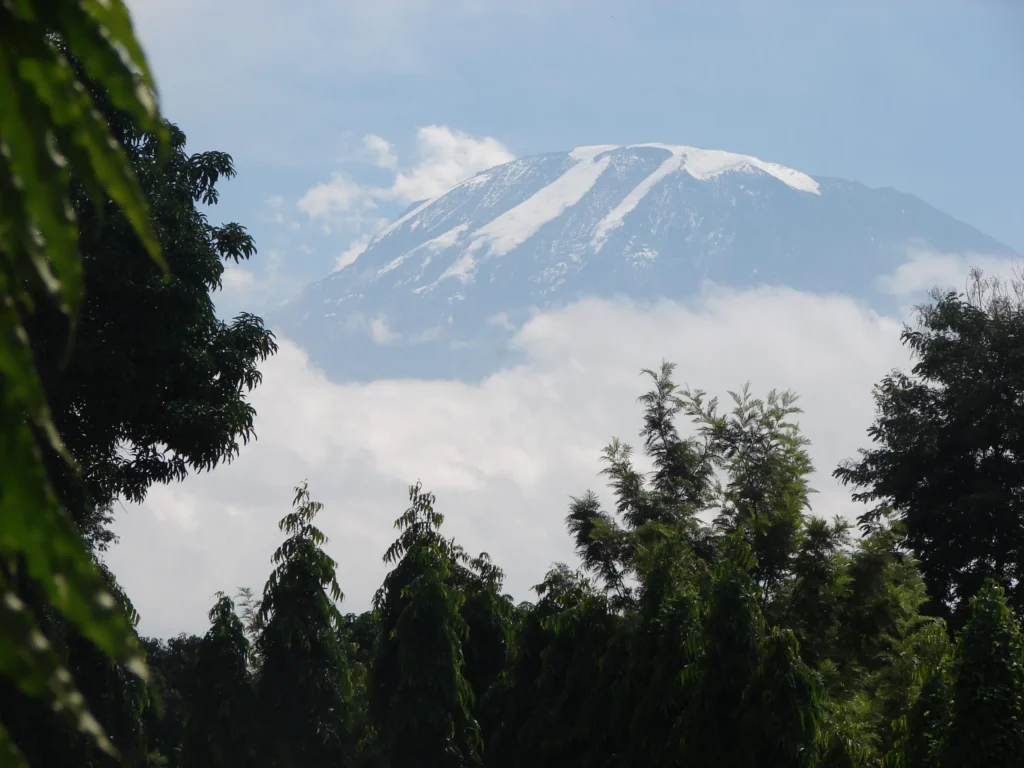
Kilimanjaro’s Best-Kept Secrets: Insider Tips for a Successful Climb Kilimanjaro climb tips are essential for anyone looking to conquer Africa’s tallest peak. This 5,895-meter giant presents an incredible adventure for climbers from all over the world. While scaling it is physically demanding, there are Kilimanjaro climb tips from experienced climbers and guides that can help ensure a successful ascent. With preparation, the right mindset, and these insider suggestions, your Kilimanjaro experience can be smoother, safer, and even more rewarding. By following these Kilimanjaro climb tips, you’ll be better equipped to tackle one of the world’s most iconic challenges. 1. Choose the Right Route for You Selecting the best route for your skill level, time frame, and expectations is one of the most important decisions you’ll make. Each route has unique characteristics: Lemosho Route: Ideal for beautiful scenery and a slower ascent, with plenty of acclimatization opportunities. Machame Route: Known for its diverse landscapes, this popular route offers gradual acclimatization and a high success rate. Rongai Route: A quieter route approaching from the north, offering a moderate difficulty level and a drier climate. Each route varies in difficulty and duration, so work with your guide to pick the best one for your goals. 2. Pace Yourself: Go “Pole Pole” The Swahili term “pole pole,” meaning “slowly, slowly,” is one of the most important pieces of advice for a Kilimanjaro climb. Many climbers struggle with altitude sickness due to rapid ascents, so it’s crucial to walk at a slow, steady pace to allow your body to adjust to the decreasing oxygen levels. Experienced guides emphasize that slow, rhythmic hiking significantly increases your chances of summiting successfully. 3. Stay Hydrated and Fuel Your Body Properly Dehydration worsens altitude sickness symptoms, so aim to drink at least 3 to 4 liters of water per day. Your guide will encourage regular breaks to hydrate, so take advantage of every opportunity to sip water. Additionally: Electrolytes: Add electrolytes or hydration tablets to your water to replenish lost minerals. Fuel Up: Prioritize complex carbs and protein at every meal to keep your energy levels up for long days on the trail. Experienced climbers often recommend keeping energy bars or snacks on hand for a quick boost during tough sections of the climb. 4. Use the Power of Acclimatization Days Choosing a route that includes extra acclimatization days is one of the best ways to improve your chances of reaching the summit. Taking extra time allows your body to adjust more gradually, reducing the risk of altitude sickness. Consider adding one or two extra nights at mid-elevation points if your schedule allows. The time spent at higher altitudes prepares you for the ascent on summit night. 5. Choose the Right Gear for All Conditions The weather on Kilimanjaro is unpredictable, with conditions ranging from warm and humid in the rainforest zone to freezing at the summit. A well-planned layering system is crucial: Base Layers: Moisture-wicking tops and bottoms. Mid Layers: Fleece jackets or insulated down for warmth. Outer Layers: Waterproof jackets and pants to protect against rain and wind. Accessories: Gloves, a warm hat, a balaclava, and sunglasses for summit day. Invest in quality gear, especially a sleeping bag rated for sub-zero temperatures, as the cold can become intense at higher altitudes. 6. Prepare Mentally for Summit Night Summit night is the most challenging part of the Kilimanjaro climb. It’s cold, dark, and physically exhausting, requiring a midnight start to reach Uhuru Peak by sunrise. Mental resilience is as important as physical fitness at this stage: Visualize Success: Many climbers use visualization to prepare for the tough ascent. Stay Positive: Remind yourself why you’re on this journey. Focus on each step rather than how much remains. Climb with a Mantra: Repeating a mantra or positive affirmation can provide focus and motivation during the toughest parts of the climb. 7. Manage Altitude Sickness Proactively Altitude sickness can strike even the fittest climbers. Mild symptoms, such as headaches and nausea, are common, but knowing how to manage them can make all the difference: Stay Hydrated: Drinking water helps alleviate headaches and fatigue. Take It Slow: Going “pole pole” is key to giving your body time to adapt. Consider Medication: Talk to your doctor about taking acetazolamide (Diamox) or other altitude medications. Be sure to try it out before the climb, as some people experience side effects. Listen to Your Body: If you experience severe symptoms, communicate with your guide. It’s crucial to prioritize safety over summiting. 8. Choose a Reliable Team of Guides and Porters Experienced, reputable guides and support staff make a significant difference in your Kilimanjaro experience. Choose a company like Kalulu Safaris that’s committed to responsible tourism, respects porter welfare, and ensures guides are knowledgeable and well-trained in safety procedures. Guides will help monitor altitude sickness symptoms, offer encouragement, and share cultural insights, making your climb safer and more enjoyable. 9. Get a Head Start with Fitness Training While Kilimanjaro doesn’t require technical climbing skills, it does demand strong endurance and leg strength. Training should begin at least three to six months before your climb: Cardio Workouts: Running, hiking, cycling, or swimming help build stamina. Strength Training: Exercises that target your legs and core—like squats, lunges, and planks—are crucial. Practice Hiking: Regular hikes, ideally with a loaded backpack, simulate the experience and help you get comfortable with the weight you’ll be carrying. 10. Celebrate Each Small Victory Remember that Kilimanjaro is a journey to be enjoyed, not just a summit to conquer. Each zone you pass brings unique ecosystems and breathtaking scenery, from lush rainforests to alpine deserts and glacial landscapes. By appreciating each moment, taking in the beauty, and reflecting on how far you’ve come, you’ll stay motivated for the final push to the summit. In Conclusion Climbing Kilimanjaro is an awe-inspiring journey that offers physical and mental challenges but immense rewards. By following these Mount Kilimanjaro climb tips, you’ll have a better chance of successfully reaching the summit and experiencing one of the world’s
Conquering Kilimanjaro: A Step-by-Step Guide to Climbing Africa’s Highest Peak
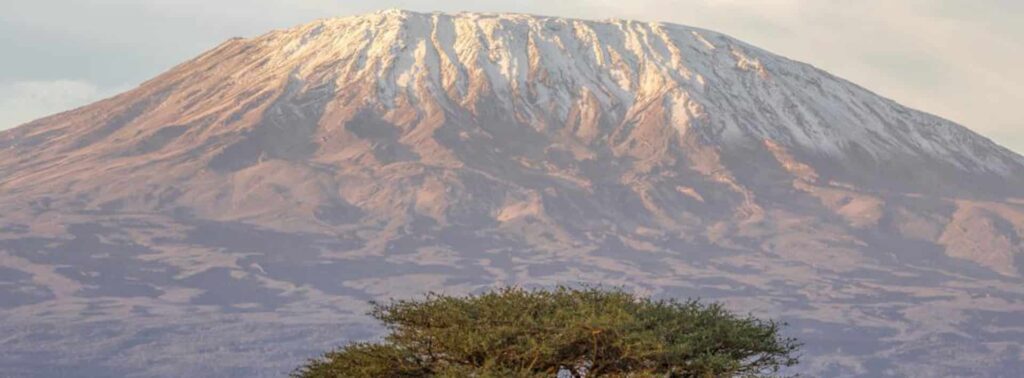
Conquering Kilimanjaro: A Step-by-Step Guide to Climbing Africa’s Highest Peak Kilimanjaro Climbing Guide Climbing Mount Kilimanjaro is a bucket-list experience for many adventurers, offering stunning landscapes, diverse ecosystems, and a sense of immense accomplishment. Known as Africa’s tallest mountain at 5,895 meters (19,341 feet), Kilimanjaro attracts climbers from all over the world. But reaching the summit requires careful planning, proper preparation, and physical and mental resilience. Here’s a comprehensive Kilimanjaro Climbing Guide from Kalulu Safaris to help you prepare for the climb of a lifetime. When it comes to Kilimanjaro climbing, the key to success lies in proper preparation. Our Kilimanjaro Climbing Guide covers everything you need to know—from choosing the right route to physical training and gear. With the right mindset and guidance, you can tackle Africa’s highest peak. Whether you’re planning your climb or already preparing, following the tips outlined in this Kilimanjaro Climbing Guide will set you on the path to success, ensuring that you are ready for one of the most rewarding experiences of your life. 1. Choose Your Route Wisely Mount Kilimanjaro offers several distinct routes, each with different levels of difficulty, scenery, and acclimatization opportunities. Choosing the right route for your skill level and goals is crucial to success. Marangu Route: Often called the “Coca-Cola Route,” this is the only route with hut accommodations. It’s a shorter route but has a lower success rate due to its fast ascent. Machame Route: Known as the “Whiskey Route,” this is the most popular route, with scenic paths and better acclimatization options, making it ideal for those seeking a balance between challenge and enjoyment. Lemosho and Shira Routes: Both offer beautiful scenery and high success rates. These longer routes allow for better acclimatization, making them suitable for those with a bit more time. Rongai Route: This is the only route that approaches from the north. It’s less crowded and considered a moderate route. Umbwe Route: The shortest but steepest route. It’s best suited for experienced climbers due to its challenging terrain. Most treks range from 5 to 10 days, depending on the route and how many acclimatization days are included. 2. Physical Training and Fitness Preparation Preparing physically is essential for a successful Kilimanjaro climb. While it doesn’t require technical climbing skills, the altitude and endurance demand strength and stamina. Build Endurance: Focus on cardio exercises like hiking, running, cycling, or swimming to build stamina. Aim for 3-5 cardio workouts a week, gradually increasing your workout duration. Strength Training: Strong legs and core are key for long hours of trekking. Include exercises like squats, lunges, and core workouts to strengthen muscles and improve balance. Practice Hiking with a Backpack: As you’ll be carrying a daypack, it’s helpful to get comfortable with its weight by hiking with it on, filled with essentials. Get Used to Altitude if Possible: If you live near mountains or can visit higher altitudes, it’s a great way to help your body adjust to lower oxygen levels. 3. Plan Your Packing Essentials Packing the right gear is essential for comfort and safety on Kilimanjaro. While porters carry your main bag, you’ll need to be self-sufficient with your daypack. Clothing: The weather on Kilimanjaro varies from tropical at the base to freezing at the summit. Use the layering system: Base Layer: Moisture-wicking thermal top and bottom. Insulating Layer: Fleece or down jacket for warmth. Outer Layer: Waterproof and windproof jacket and pants to protect from rain and wind. Accessories: Warm hat, gloves, scarf, and a balaclava for summit day. Footwear: Sturdy, broken-in hiking boots and thick wool socks. Daypack Essentials: A good-quality, 20-30L daypack should include: Water bottle or hydration pack Snacks for quick energy Sunscreen, sunglasses, and a hat for sun protection Headlamp with extra batteries First-aid kit and personal medications Portable power bank for electronics if needed Sleeping Bag: Choose a four-season sleeping bag rated for sub-zero temperatures. 4. Mental Preparation and Attitude Kilimanjaro is as much a mental challenge as it is a physical one. The journey can be grueling, with long days of hiking, altitude sickness symptoms, and cold temperatures on summit night. Visualize Success: Picture yourself at the summit. This can help keep you motivated when the trek gets tough. Embrace the Journey: Appreciate the mountain’s beauty, from rainforests to moorlands, alpine deserts, and glaciers. Prepare for Altitude Sickness: Even the fittest climbers can experience altitude sickness. Know that it’s normal and can be managed with rest, hydration, and gradual acclimatization. 5. Altitude Acclimatization and Health Considerations Altitude is one of the biggest challenges on Kilimanjaro. Proper acclimatization is crucial for a safe and successful climb. Hydrate: Aim to drink at least 3-4 liters of water daily to help your body adjust to the altitude. Take It Slow: Your guides will remind you to go “pole pole” (slowly, slowly). Slower pacing is key to minimizing altitude sickness. Acclimatization Days: Routes like Lemosho and Machame offer built-in acclimatization days to help your body adjust. Extra days increase your chance of reaching the summit. Medication: Some climbers use medications like acetazolamide (Diamox) to help with altitude symptoms. Consult your doctor about this option and any health conditions. 6. What to Expect on the Mountain Each day on Kilimanjaro is unique, bringing different landscapes, challenges, and rewards. Diverse Landscapes: You’ll start in lush rainforests, progress through heather-filled moorlands, traverse alpine deserts, and finally reach the glacial zone at the summit. Changing Weather: The weather can vary greatly. You might experience rain, intense sun, and even snow on summit day. Flexibility and adaptability are crucial. Summit Night: The final ascent often begins around midnight to reach the summit at sunrise. This is the toughest part of the climb, involving a steep, cold, and challenging trek, but reaching Uhuru Peak is worth every effort. 7. Celebrate the Summit! Reaching the summit of Mount Kilimanjaro, standing at Uhuru Peak, is an incredible accomplishment. Take time to soak in the moment, snap photos, and reflect on the journey. You’ll have pushed through challenges, supported your fellow
